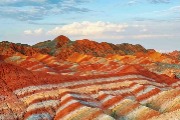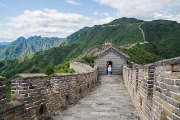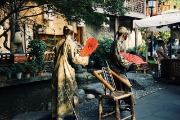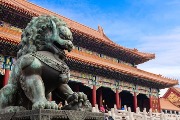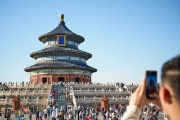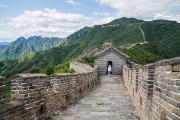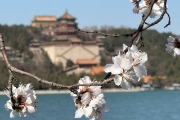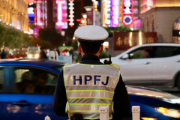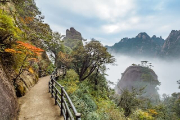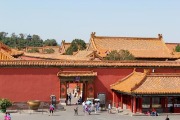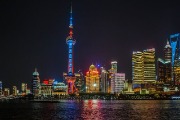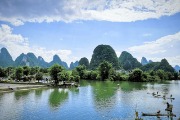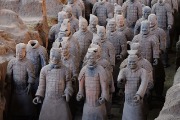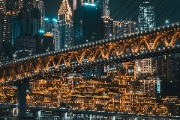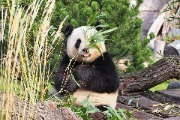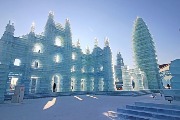Beijing National Stadium (Bird's Nest)
It is the only stadium in the world that has hosted both the Summer and Winter Olympic Games.
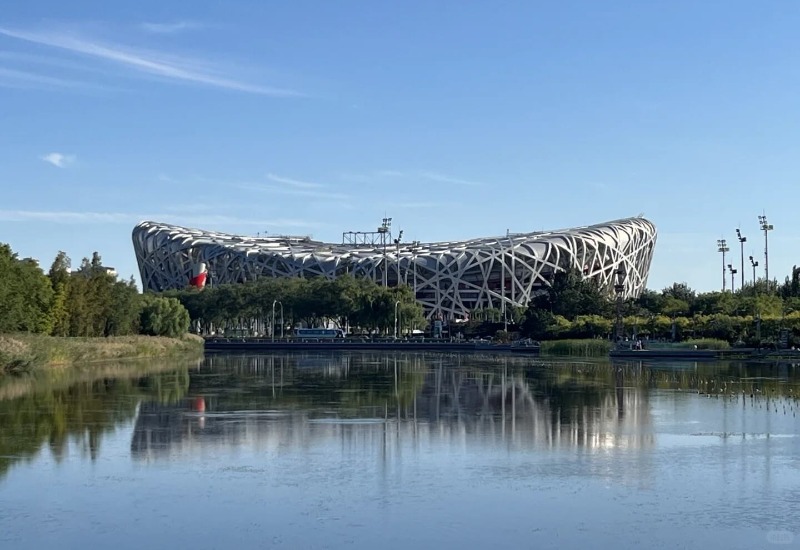
Location: Chaoyang District, Beijing, China
Type: Popular tourist attraction in Beijing, one of China’s top sports venues, the world’s first “Double Olympic Opening and Closing Ceremony Venue”
If you ask which is the most famous sports stadium in China, it’s definitely the Beijing National Stadium (Beijing Bird’s Nest Stadium). It hosted the opening and closing ceremonies of the 2008 Beijing Olympics and Paralympics, as well as the 2022 Winter Olympics and Paralympics. It’s the only stadium that’s hosted both a Summer and a Winter Olympics.
These days, the Beijing Bird’s Nest Stadium is open to visitors year-round, making it one of the top tourist spots in Beijing. Over 35 million people have visited it so far. This article will take you on a tour of this Olympic venue and help you decide if it’s worth a visit.
Most articles about the National Stadium in Beijing are more like encyclopedia entries, full of boring facts and info. Here at FreeTravelChina.com, we don’t like writing that kind of dull stuff. So, instead of just listing off facts, we’re going to give you a real travel experience. We’ll show you what you can see when you visit the Beijing National Stadium, what activities happen there, and what other cool places nearby are worth checking out. Of course, we’ll wrap up with a quick Q&A section for some light reading, but that’s just a bonus.
Table of Contents
Highlights of the Beijing National Stadium
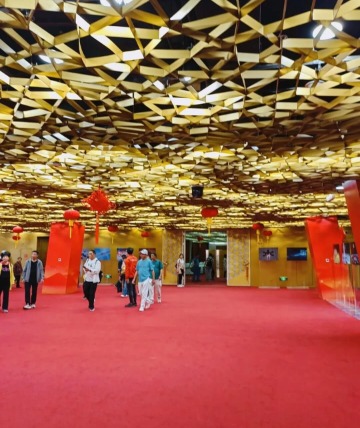
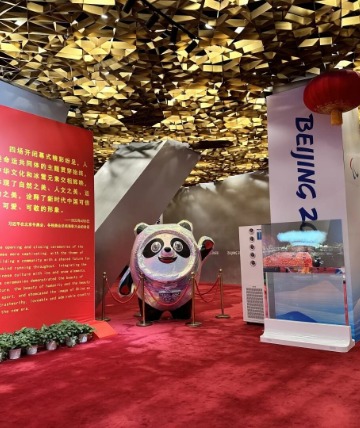
Golden Hall (First Floor) 金色大厅(一楼)
When you pass through the ticket gate at the Beijing Bird’s Nest Stadium entrance, you’ll enter the Golden Hall on the first floor. Look up at the ceiling, and you’ll see it’s designed to look like a shattered golden eggshell—super shiny and impressive. Inside the hall, there are lots of souvenirs from Beijing’s two Olympic Games, like mascots, torches, and models of peace doves. There’s also a big screen showing videos of the opening and closing ceremonies from the 2008 Beijing Olympics. In the hall, you’ll find a golden passageway that leads up to the second floor of the Beijing National Stadium. This corridor is the same one world leaders use when they visit during the Olympics.

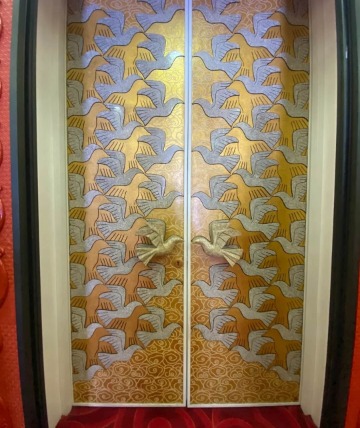
Auspicious Cloud Golden Hall (Second Floor) 祥云金厅(二楼)
After walking up the golden passageway, you’ll arrive at the Auspicious Cloud Golden Hall. This is the Beijing Bird’s Nest Stadium’s top VIP lounge, where many world leaders and IOC executives relaxed and mingled during the 2008 and 2022 Beijing Olympics.
Look up at the ceiling, and you’ll see 2,008 peace doves, symbolizing the 2008 Olympics held in China. Check out the door handles too—they’re made from countless delicate eggshells, symbolizing how hard peace is to achieve, while also showcasing the incredible craftsmanship of China’s traditional lacquer art. And here’s a fun fact: the material inside the door handles is made from repurposed artillery shells. Eggs, bullets, and doves—together, they send a powerful message: “No more war, and let peace fill the world.”
Look further ahead, and you’ll spot a painting on the wall—a “Magpie on a Branch” scene, symbolizing good luck, happiness, and vitality.
These are just a few of the many artistic details in the Auspicious Cloud Golden Hall. There’s so much more to see, so you’ll definitely want to check it out in person!
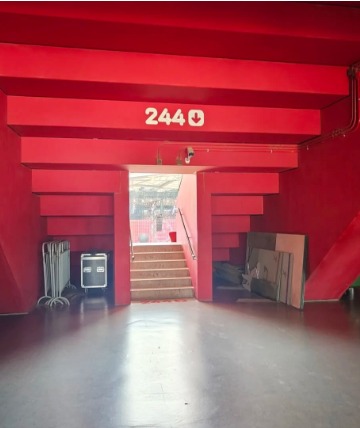
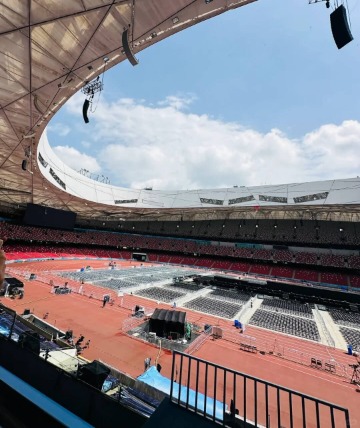
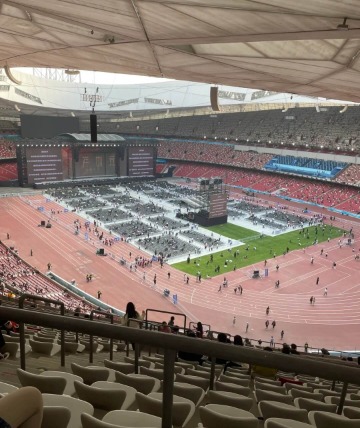
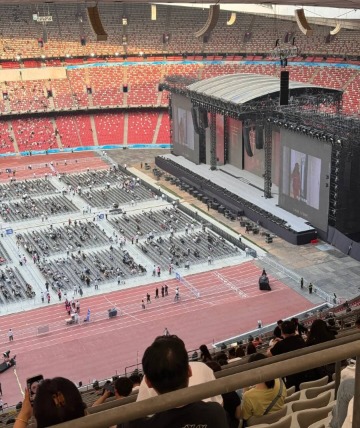
The Stadium (运动场)
After checking out the Auspicious Cloud Golden Hall, you can take the elevator up to the fifth floor and explore the main stadium. It might not look that impressive in photos, but once you step inside, you’ll feel its grandeur and wow factor. The stadium seats 91,000 spectators, and the fourth level even has 140 luxury VIP boxes.
From your seat, if you look up at the sky, the stadium looks like a giant bowl. This design isn’t just for looks—it’s a perfect blend of visual and acoustic optimization. No matter where you sit, the distance from your seat to the center of the field is always 140 meters, ensuring everyone has the best view. The roof of the stands is made with special curved sound-absorbing materials, so the sounds of the stadium really surround you, creating an immersive experience. What’s even cooler is that the designers cleverly incorporated fluid dynamics, so wherever you sit, you’ll always feel even sunlight and a gentle breeze.
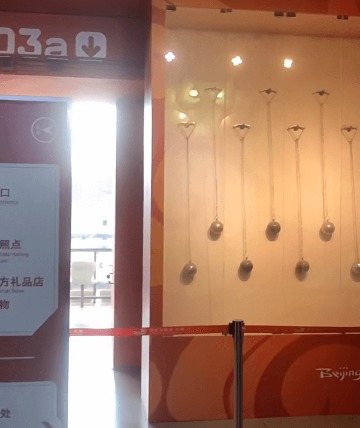
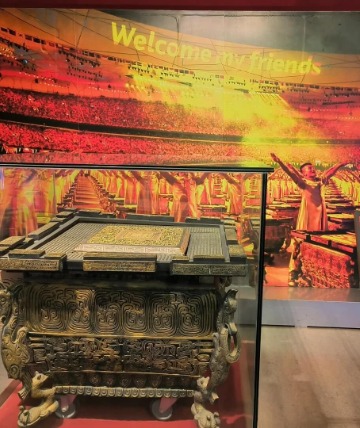
Equipment Experience Hall (Fifth Floor) 器材体验馆(五楼)
After soaking in the view of the stadium, head over to the Equipment Experience Hall, where you’ll find displays of gear used by athletes in both the Summer and Winter Beijing Olympics. There are all sorts of equipment on show, like the hammer throw, shot put, discus, and javelin. Beyond sports gear, you’ll also see performance equipment used during the Olympics opening ceremonies, with the most famous being the ancient Chinese instrument called the “Fou,” featured in the first performance of the 2008 opening ceremony.
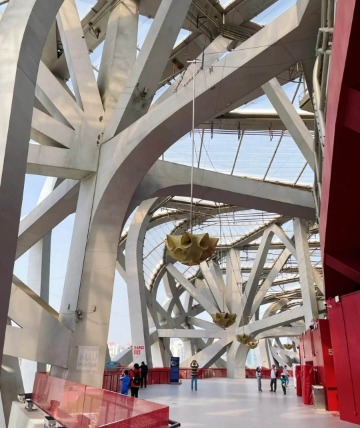
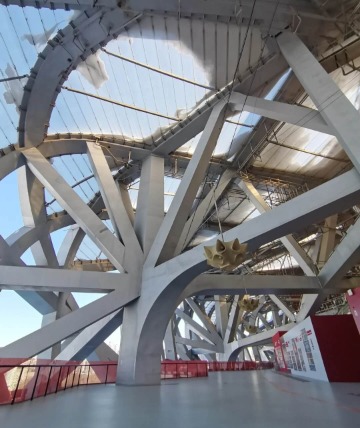
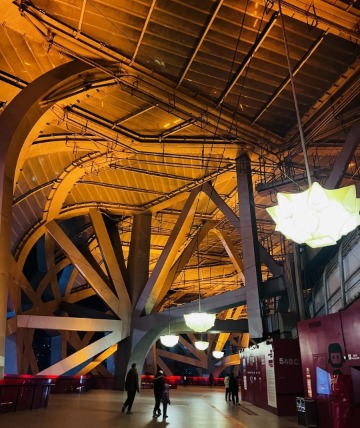
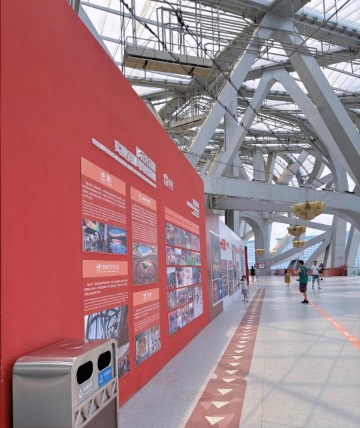
Steel Forest (Fifth Floor) 钢铁森林(五楼)
Once you’ve explored the Equipment Hall, walk a bit further to the “Steel Forest,” one of the Beijing National Stadium’s top attractions. This is the best spot to get a close-up view of the stadium’s steel frame, and the photos you take here will be truly unique. Next to the steel trees, there’s a row of display boards showing the China Bird’s Nest’s construction journey, from the first brick to the final product, along with amazing photos from all the major events held here.
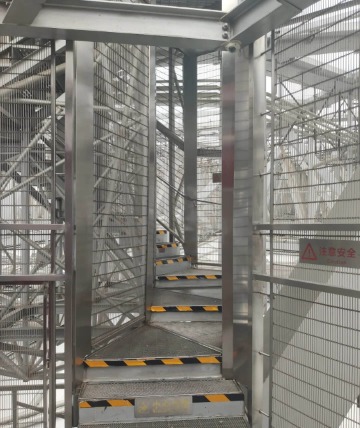
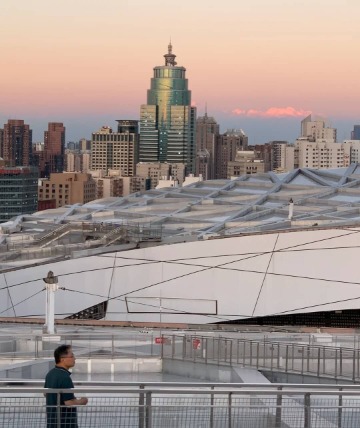
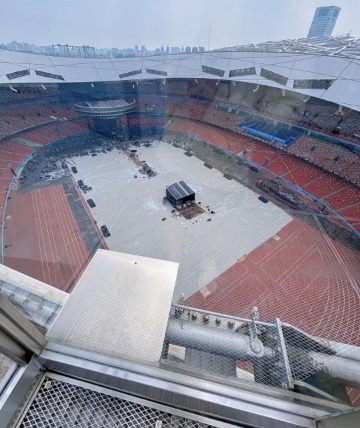
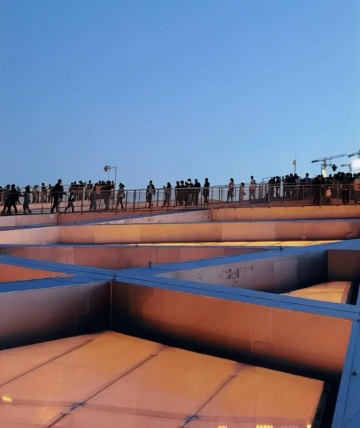
The Rooftop (Sky Corridor) 登顶(空中走廊)
After snapping some photos in the Steel Forest, head up the nearby staircase to the Beijing Bird’s Nest Stadium’s highest point—the “Sky Corridor.” If you’re afraid of heights, you might want to brace yourself. From the top, you’ll get a bird’s-eye view of surrounding attractions like the Beijing Olympic Park, the Torch Tower, the Olympic Tower, and the Water Cube. Plus, you’ll have a full panoramic view of the entire stadium. From up there, the people on the field suddenly look like tiny matchsticks!
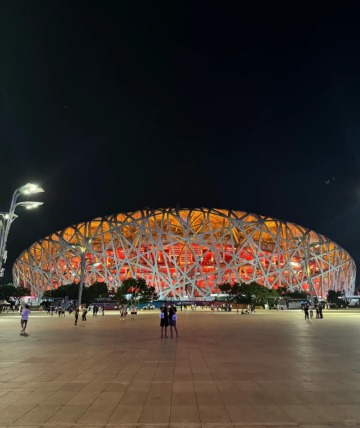
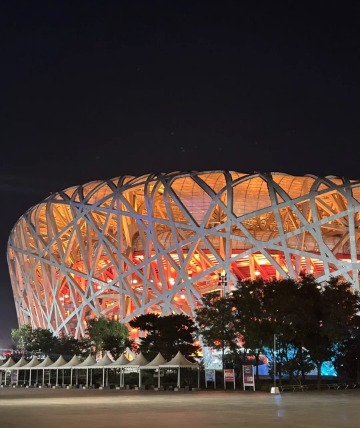
At Night (晚上)
The Beijing National Stadium is even more beautiful at night. From a distance, it looks like a massive metal net, with lights shining through the mesh to create a stunning light and shadow effect. During major events or competitions, the lights change with the music and rhythm, giving you a full-on visual and auditory experience.
The lights usually turn on between 7:00 and 7:30 p.m., and visiting the exterior at night is free, with no reservation required.
Other Olympic Buildings Nearby
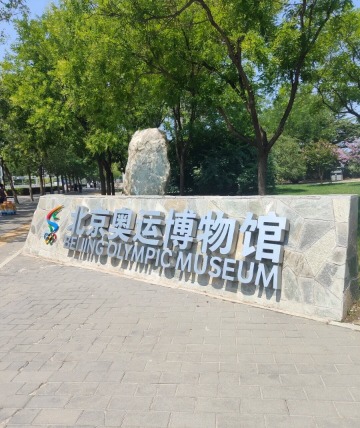
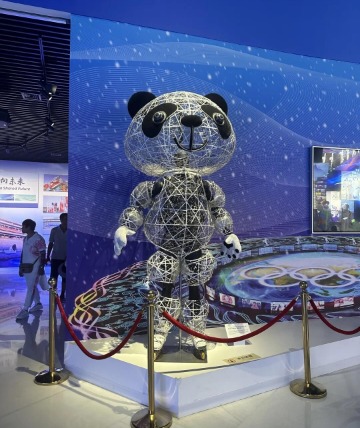
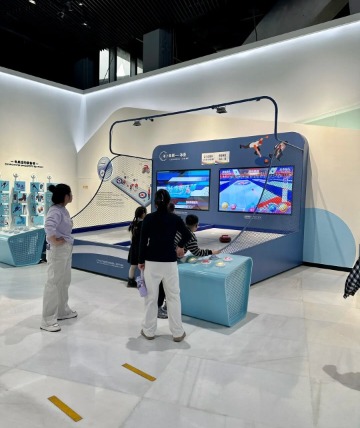
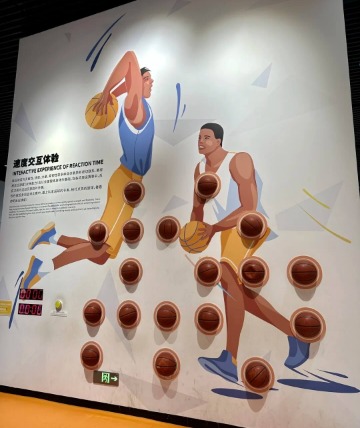
Beijing Olympic Museum (北京奥运博物馆)
The Beijing Olympic Museum is located just south of the Beijing National Stadium Bird’s Nest, about a 5-minute walk (500 meters) away. It offers a full showcase of the history behind the bidding, preparation, and hosting of the 2008 Summer Olympics and the 2022 Winter Olympics. The museum is divided into three sections: the Winter Olympics, the Summer Olympics, and the Double-Olympic City.
Inside, there are lots of interactive exhibits, including games for ping pong, alpine skiing, figure skating, boxing, curling, and weightlifting. Many kids have a blast here! These interactive features not only make the visit more fun but also help visitors dive deeper into Olympic history and knowledge.

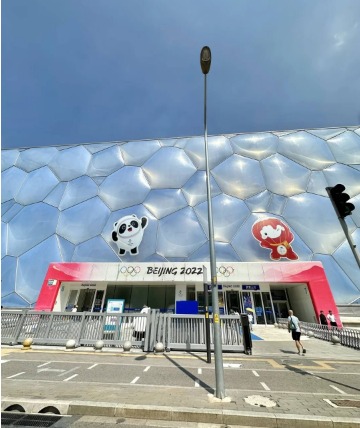
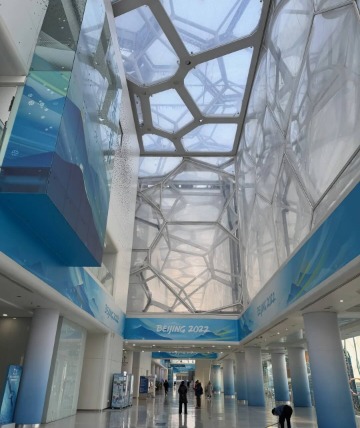
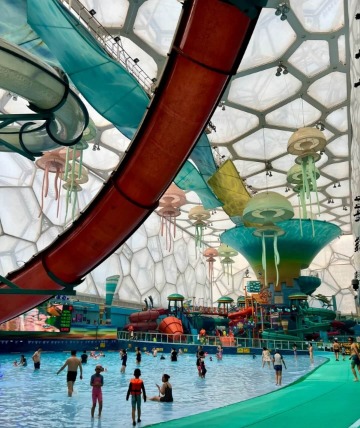
Water Cube (National Aquatics Center) 水立方(国家游泳中心)
The Water Cube is only 200 meters from the Beijing Bird’s Nest Stadium. During the 2008 Beijing Olympics, it hosted swimming, diving, synchronized swimming, and water polo events. For the 2022 Winter Olympics, the venue was renovated to add ice sports facilities.
The Water Cube’s exterior is made up of over 3,000 irregular air cushions, giving it the appearance of a sparkling blue cube. In the sunlight, the blue skin reflects dazzling light, making the Water Cube look like a giant blue gemstone shining brightly. Although these air cushions might look like bubbles, they’re incredibly strong and durable—so much so that you could drift a 4×4 over them without damaging them!
In addition to being a top-tier sports venue, the Water Cube also features a water park inside. The park has ten major water attractions and over 20 water slides, with multiple water shows throughout the day. It’s like swimming inside a giant bubble—so dreamy and fun!
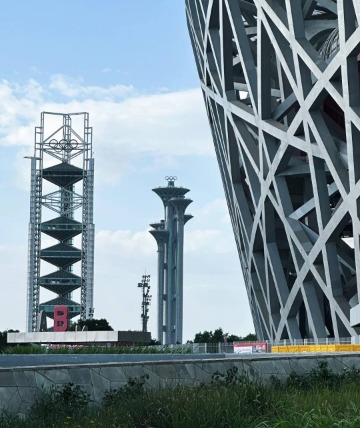
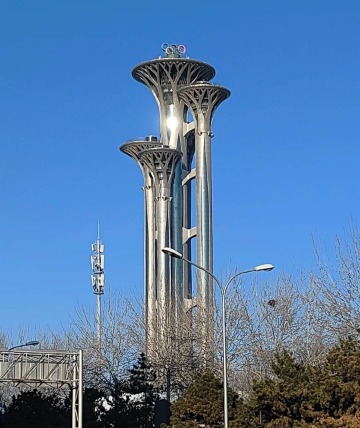
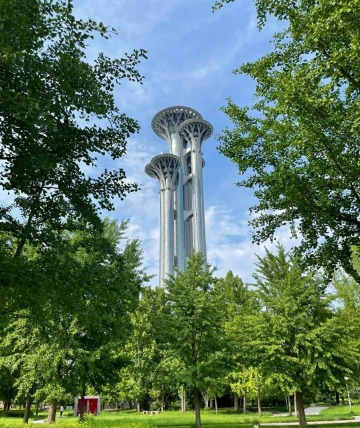
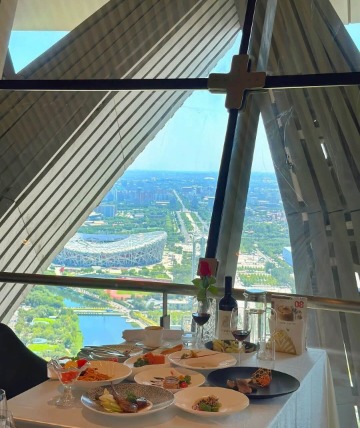
Olympic Tower (奥林匹克塔)
The Olympic Tower is about 1.5 kilometers from the Beijing National Stadium. Beijing is the second city in the world to permanently display the Olympic Rings symbol (the first was Montreal, Canada), and it’s located at the top of this tower.
From the highest point of the tower, you’ll get a panoramic view of Beijing, including iconic landmarks like the Beijing Bird’s Nest Stadium and the Water Cube. You can also dine in the rotating restaurant inside the tower, enjoying delicious Beijing cuisine while taking in the stunning city skyline.
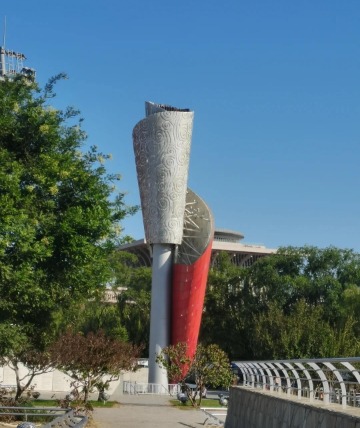
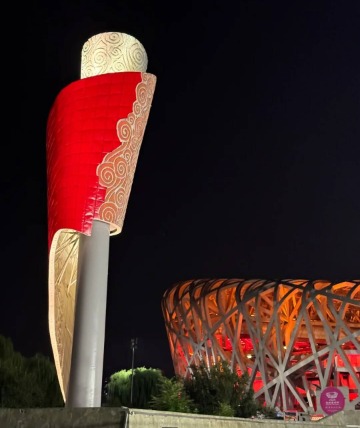
Torch Tower (火炬塔)
The Torch Tower is right outside the Beijing Stadium Bird’s Nest. It’s a key symbol of the 2008 Beijing Olympics. The tower rises in a spiral shape, with smooth, graceful lines that give it a sense of upward momentum. While the flame inside has long since gone out, the tower still silently tells the story of the unforgettable glory of the 2008 Olympics.
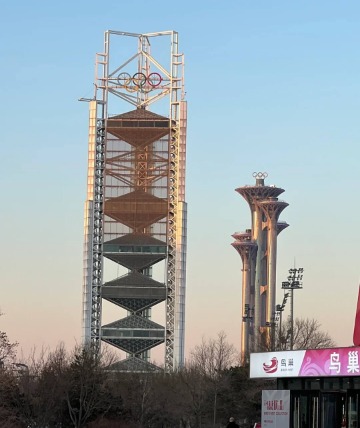
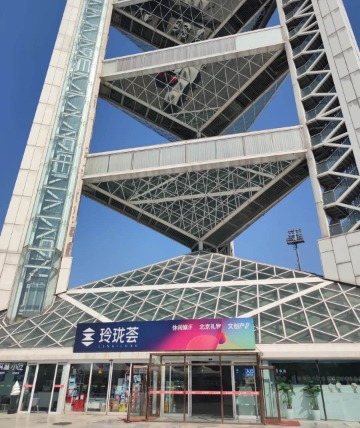
Olympic Broadcast Center (Linglong Tower) 奥运转播中心(玲珑塔)
Linglong Tower is about 600 meters from the Beijing National Stadium. This is where the broadcast signals for the 2008 Beijing Olympics were sent out to over 220 countries and regions worldwide. When the London Olympics organizing committee saw the tower, they were so impressed by its functionality that they even considered borrowing it for the London Games (though it looks like they didn’t manage to do so).
Major Events Held at the Beijing Bird's Nest Stadium
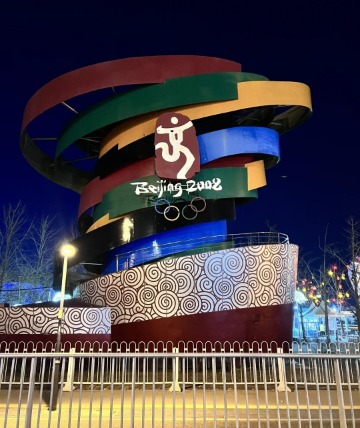
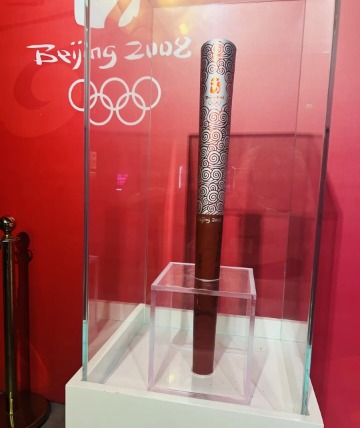
2008 Beijing Olympics (2008年北京奥运会)
The 2008 Beijing Olympics was China’s first-ever Olympics, and the Beijing Bird’s Nest Stadium was built specifically for this moment. A total of 204 countries and regions participated, and the slogan was “One World, One Dream.”
The Chinese Olympic team finished first with 51 gold medals, the U.S. came second, and Russia took third. This was also the first time an Asian country ranked #1 in the Olympics.
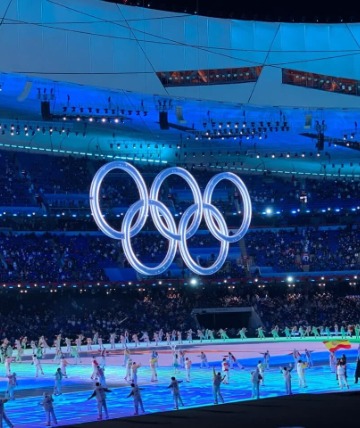
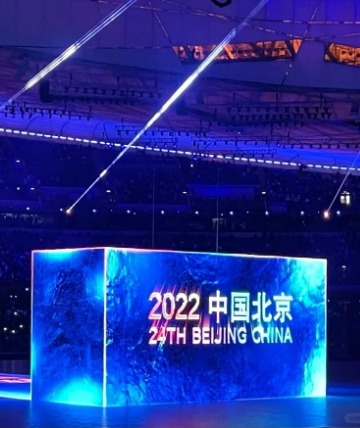
2022 Winter Olympics (2022年冬运会)
The 2022 Beijing Winter Olympics made Beijing the first city in history to host both the Summer and Winter Olympics. All competition venues were powered by 100% green electricity, and 80% of the vehicles used were clean energy vehicles.
The Norwegian team topped the medal table with 16 golds, Germany came second, and China placed third.
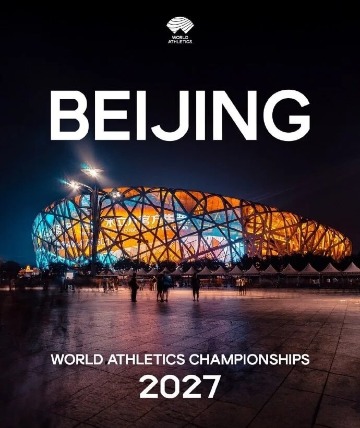
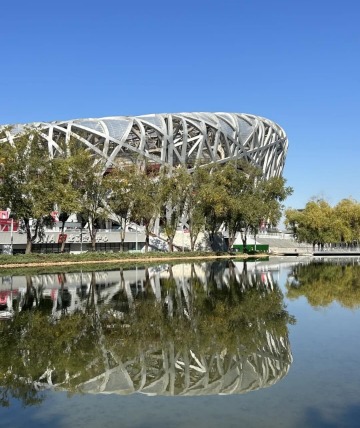
2027 World Athletics Championships (2027世界田径锦标赛)
The World Athletics Championships is considered one of the top three sporting events in the world, alongside the Olympics and the FIFA World Cup. At the 234th meeting of the World Athletics Council in Glasgow on February 29, 2024, it was announced that the 2027 Outdoor World Athletics Championships will be held at the Bird’s Nest of Beijing.
Daily Use of the China Stadium Bird's Nest
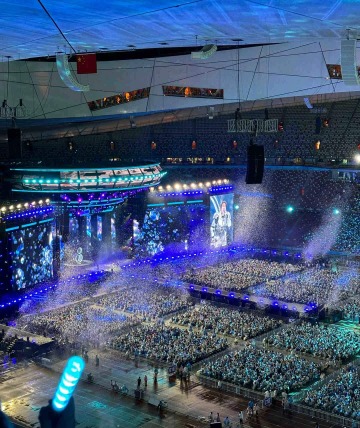
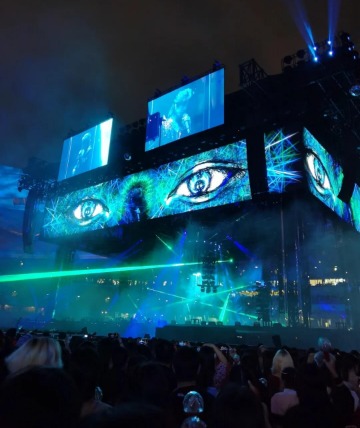
Concerts (演唱会)
The Bird’s Nest Stadium in Beijing regularly hosts concerts. In 2024 alone, it held 39 large-scale concerts, attracting over 2.16 million people, with an average attendance of more than 55,000 per show. It’s said that the daily rent for the stadium is around 3 million CNY (about 420,000 USD). But that’s just the rent—additional costs like stage setup, sound system rental, and staff expenses make it an expensive event. As a result, only top-tier artists typically perform at the Beijing National Stadium.
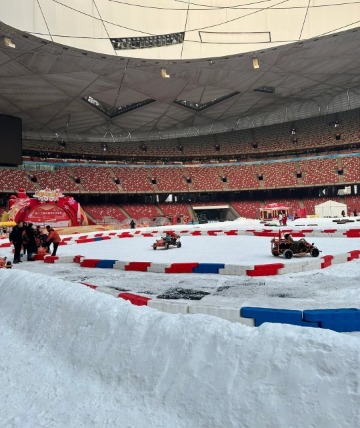
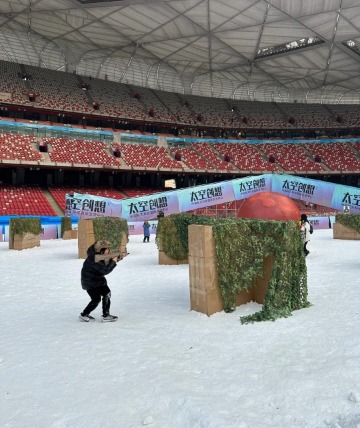
Winter Snow and Ice Festival (鸟巢冰雪季)
Every year, from early January to mid-February, the Beijing Bird’s Nest Stadium hosts the Bird’s Nest Snow and Ice Festival. Besides the usual ice slides, you can also enjoy snow go-karting, snow shooting, and snow tubing. Tickets range from 120 to 160 CNY (about 17 to 22 USD).
Architectural Features of the Beijing National Stadium
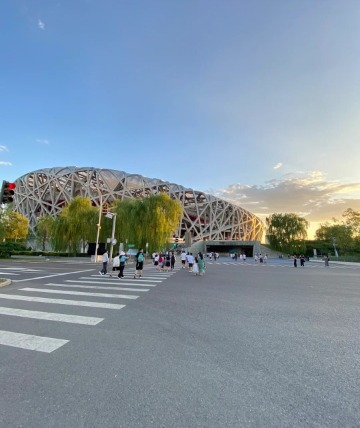
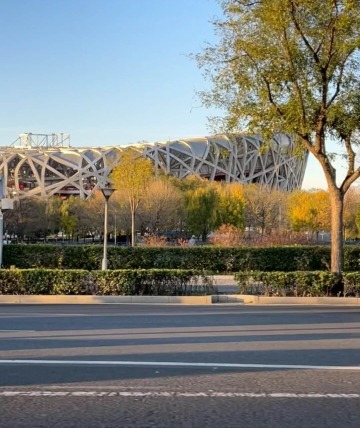
Design Concept (鸟巢的设计理念)
The designers of the Beijing National Stadium are Swiss architects Jacques Herzog and Pierre de Meuron. The design looks like a giant “bird’s nest,” symbolizing the nurturing of life, inclusivity, and the spreading of hope. The thousands of steel beams on the exterior not only represent the “branches that make up the nest” but also symbolize human unity and collaboration.
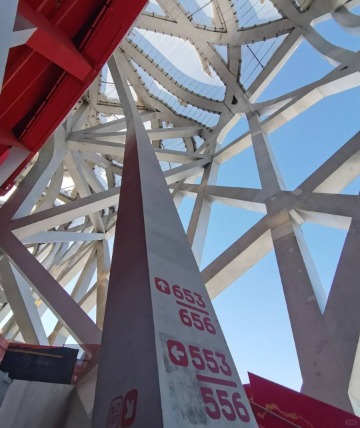
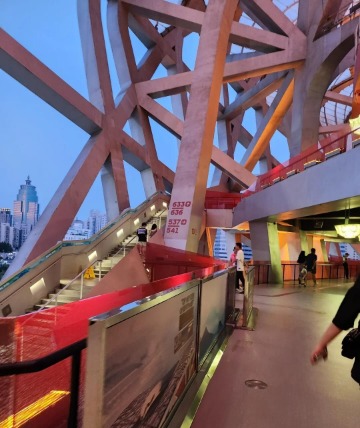
Materials Used in the Bird's Nest (鸟巢的材料)
To create the authentic “bird’s nest” effect, the building uses 48,000 tons of steel. To ensure the pillars supporting this steel structure are strong and durable enough, engineers chose the most suitable steel for the project—Q460 steel, which was independently developed by a steel plant in Henan, China.
Additionally, since there were concerns that the steel might corrode over time, engineers applied 1,000 tons of anti-corrosion paint, applying six layers to ensure the Beijing National Stadium would remain resistant to corrosion for 25 years.

Technology in the Bird’s Nest (鸟巢的科技)
- Earthquake Resistance: Most buildings around the world can’t withstand earthquakes and are prone to collapse. However, the Beijing Bird’s Nest Stadium is designed to resist an 8-magnitude earthquake. It uses a steel structure and separates the building into six sections, allowing it to quickly disperse seismic forces and avoid casualties. It also has a hidden evacuation passage to ensure safety, with the entire stadium able to be evacuated in just 8 minutes.
- Rainwater Collection: Every membrane structure on the Beijing National Stadium’s roof has a rainwater drainage point, which connects to pipes leading to storage tanks. The stadium can collect up to 12,000 cubic meters of rainwater, enough to irrigate the entire field 120 times.
- Solar Power: The Beijing Olympic Stadium is equipped with a 130-kilowatt photovoltaic solar power system installed above the 12 main passageways, providing energy for the entire venue.
- Disability-Friendly Design: To ensure accessibility for people with disabilities, the stadium includes designated wheelchair seating and offers a range of personalized services for disabled visitors.
FAQs about the Bird's Nest Stadium in Beijing
1. When was the Beijing National Stadium built?
Construction of the Beijing National Stadium began on December 24, 2003, and was completed in March 2008. It has a design lifespan of 100 years.
2. How big is the Beijing National Stadium?
The Beijing Bird’s Nest Stadium covers an area of 20.4 hectares and can seat 91,000 spectators.
3. Why is the Beijing National Stadium called the Birds Nest?
The Beijing National Stadium looks like a cozy bird’s nest made of intertwined branches, so it was naturally nicknamed “the Bird’s Nest” by the Chinese. If you ask a Chinese person where the National Stadium is, they might not know, but if you ask where the Bird’s Nest is, they’ll definitely be able to tell you.
4. How much did the Bird’s Nest cost to build?
The total construction cost of the Beijing National Stadium was 3.4 billion CNY (about 476 million USD), with annual maintenance costs around 80 million CNY (about 11 million USD). Its annual revenue is about 100 million CNY, which barely covers the maintenance expenses.
5. What does the Bird's Nest mean to China?
The Beijing Bird Nest Stadium is not just a sports venue; it represents a bold innovation in Chinese architectural technology, showcasing China’s rise in the global architectural scene and its commitment to both preserving and innovating traditional culture. Its unique design has become one of the symbols of Chinese culture.
Moreover, the Beijing Bird’s Nest Stadium has hosted two Olympic Games, making it a sacred place for Chinese sports. Its existence symbolizes China’s respect and promotion of the Olympic spirit.
How to Get to the Beijing Bird's Nest Stadium
Take Beijing Subway Line 8 and get off at the Olympic Sports Center Station (B1 North Exit) or the Olympic Park Station (D or E Exit). From the Olympic Sports Center Station, walk about 750 meters north to reach the Beijing National Stadium Bird’s Nest. From the Olympic Park Station, walk about 750 meters south to get to the Bird’s Nest Stadium Beijing China.
Hours & Fees
Hours
Daily from 10:00 AM to 6:00 PM, with the last entry at 5:00 PM. (During the Bird’s Nest Snow and Ice Festival, opening hours are extended until 9:00 PM, but ticket sales stop at 8:00 PM.)
Time Required
2 hours
Fees
100 CNY (about 13 USD) per person
Practical Tips
Both the Bird’s Nest and the Water Cube require security checks. You’ll need to show your ID or passport, and large luggage and liquid items are not allowed.
Only the 1st, 2nd, and areas above the 5th floor are open to visitors inside the Beijing National Stadium.

